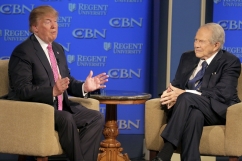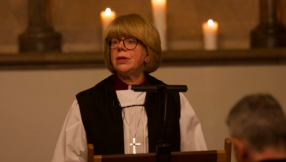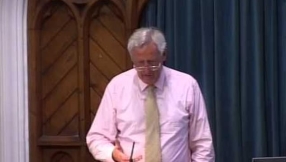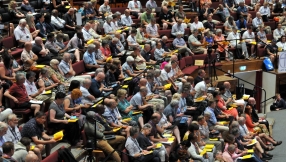Four years ago, just after the election of Barack Obama for a second term as US president, I was told the Religious Right was over.
I'd just published research asking whether a British version of the Religious Right existed and was told by an experienced American journalist that I'd missed the point. The Religious Right in America was in terminal decline so there really wasn't much point in comparing the situation in Britain with it.

Four years on, as we rake over the smouldering coals of the 2016 presidential election victory a statistic stands out above all others. The vast majority – 81 per cent – of white evangelicals voted for Donald Trump, more than even the 78 per cent who cast their ballot for George W Bush in 2004.
The Religious Right wasn't necessarily dead at all. In fact it had morphed into one of Trump's most reliable voting blocs.
Sure, the Religious Right lacked its charismatic leaders of old, like Jerry Falwell and its large scale membership organisations like the Moral Majority and Christian Coalition. But maybe now it didn't need them. The candidate spoke straight to evangelicals during the debates and social media did the rest.
Despite his obvious unsuitability as a candidate (thrice married, couldn't name a Bible verse, had never asked for forgiveness) Trump was declared the only choice by a series of Religious conservatives. Broadcaster Eric Metaxas, theologian Wayne Grudem, Pastor Robert Jefress, Liberty University's Jerry Falwell Junior and the rest of the white men who comprise the third generation of Religious Right leaders backed their man. The reason? The Supreme Court. Trump promised to appoint only very conservative justices. This meant issues the Religious Right cared about could be back in play – school prayer, LBGT rights and the big one: abortion.
In numerous social media discussions with Trump voters, this was the factor that arose time and again. Trump had promised to fill the court with conservatives who would work to repeal Roe vs Wade, the decision that legalised abortion across every state of the Union.
So what now?
Trump is already backtracking on several campaign promises. Can he afford to do the same with the Religious Right? It's known disappointment before. Despite having George W Bush in the White House and a Republican Congress, the Religious Right didn't manage to secure much in the way of reform to abortion law in the early 2000s. Neither did Bush Snr or even the darling of the right, Ronald Reagan.
In fact, despite abortion being central to the concerns of the Religious Right – a foundational bloc of the Republican base since the 1970s – there has never been a moment quite like this. Trump has made it clear he will pick conservative justices and even offered a pre-approved list. The next four years could see a decisive shift in the make-up of the court. With Antonin Scalia's seat to be filled, there may yet be more vacancies for President-elect Trump. Ruth Bader Ginsburg is 83, Anthony Kennedy is 80 and Stephen Breyer is 78. These three liberal-leaning justices are unlikely to choose to retire during a Trump presidency and Republican Congress, but of course there is a realistic chance any of them could die in office.
With some recent decisions ending in deadlock in the court since Scalia's demise, it is clear that another one or two vacancies during the Trump term could spark a radical reform of the court. The so-called Warren Court of the 50s and 60s ushered in the era of civil rights and other liberal reforms which paved the way for the Roe decision in 1973. A conservative majority that would reverse this path is one of the key goals of the Religious Right – restricting abortion has been one of the central planks of its programme since its foundation in the mid 70s.
Trump, like the Brexiteers in the UK, has two options. He can attempt to legislate in favour of the Religious Right – a sort of hard Brexit type option. The much more likely path is that he fills court vacancies as they arise during his term – a sort of soft Brexit option.
If this is indeed the approach he takes (and he showed no interest in pro-life activism until he needed the votes of the Religious Right in primary season) then the future of the Religious Right is up in the air. Success on one of its key goals – the rolling back of abortion rights to the states – will depend on the health of octogenarian liberal justices.
The Religious Right has proven it is far from moribund. Having flexed its muscles to carry Trump to the presidency it now resumes its traditional role while there is a Republican in office – watching and waiting for him to deliver.
Follow Andy Walton on Twitter @waltonandy
















